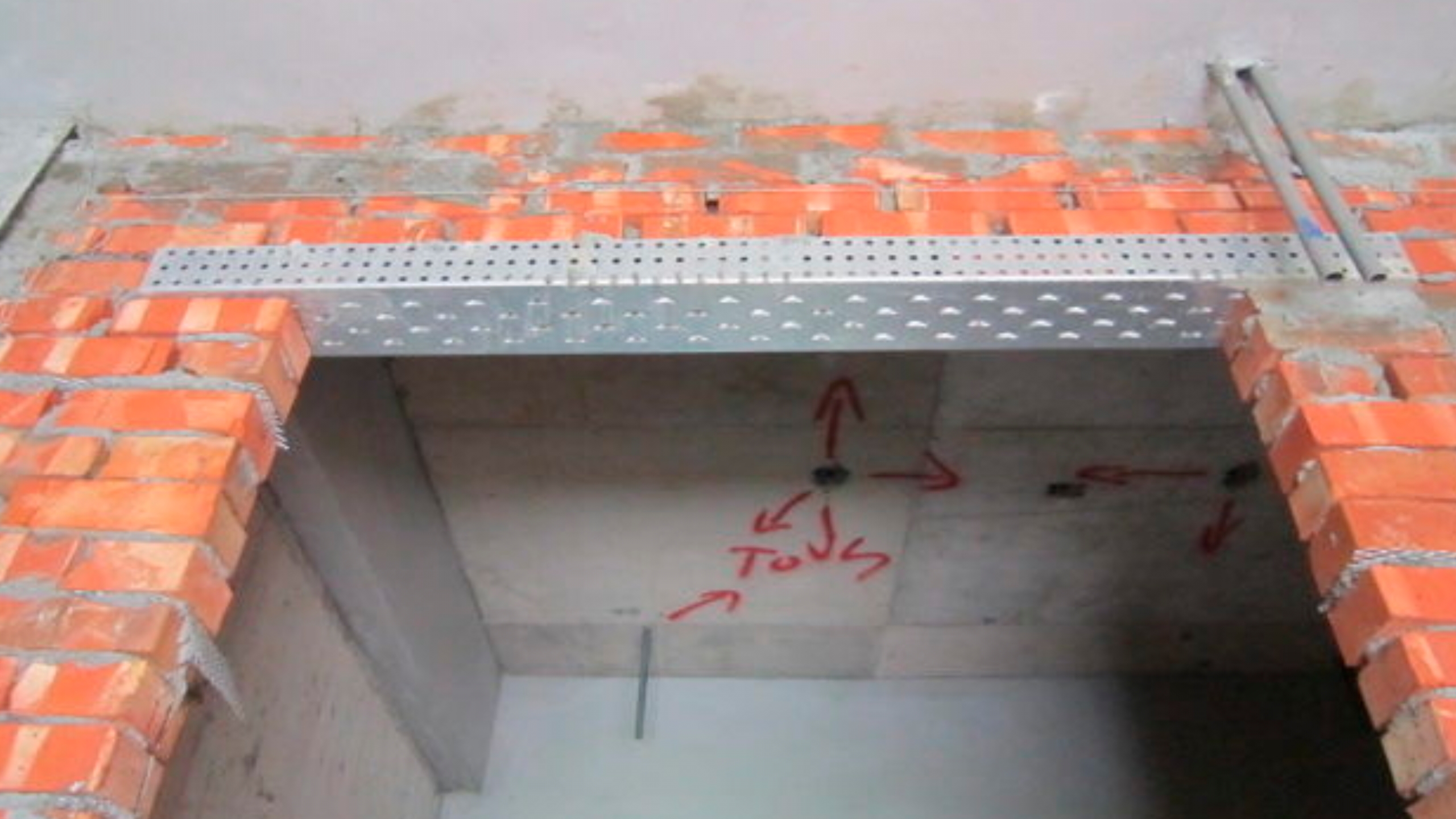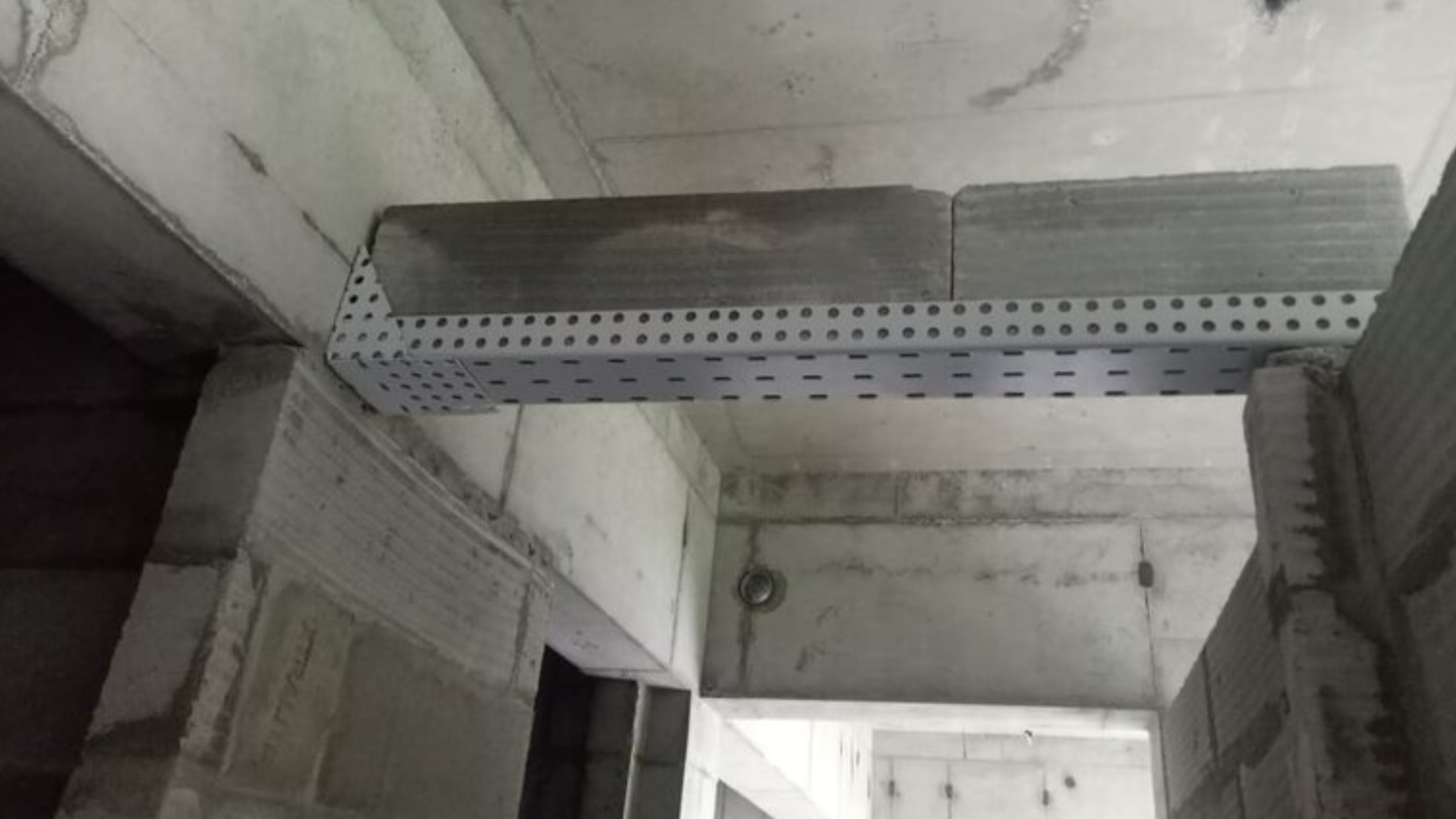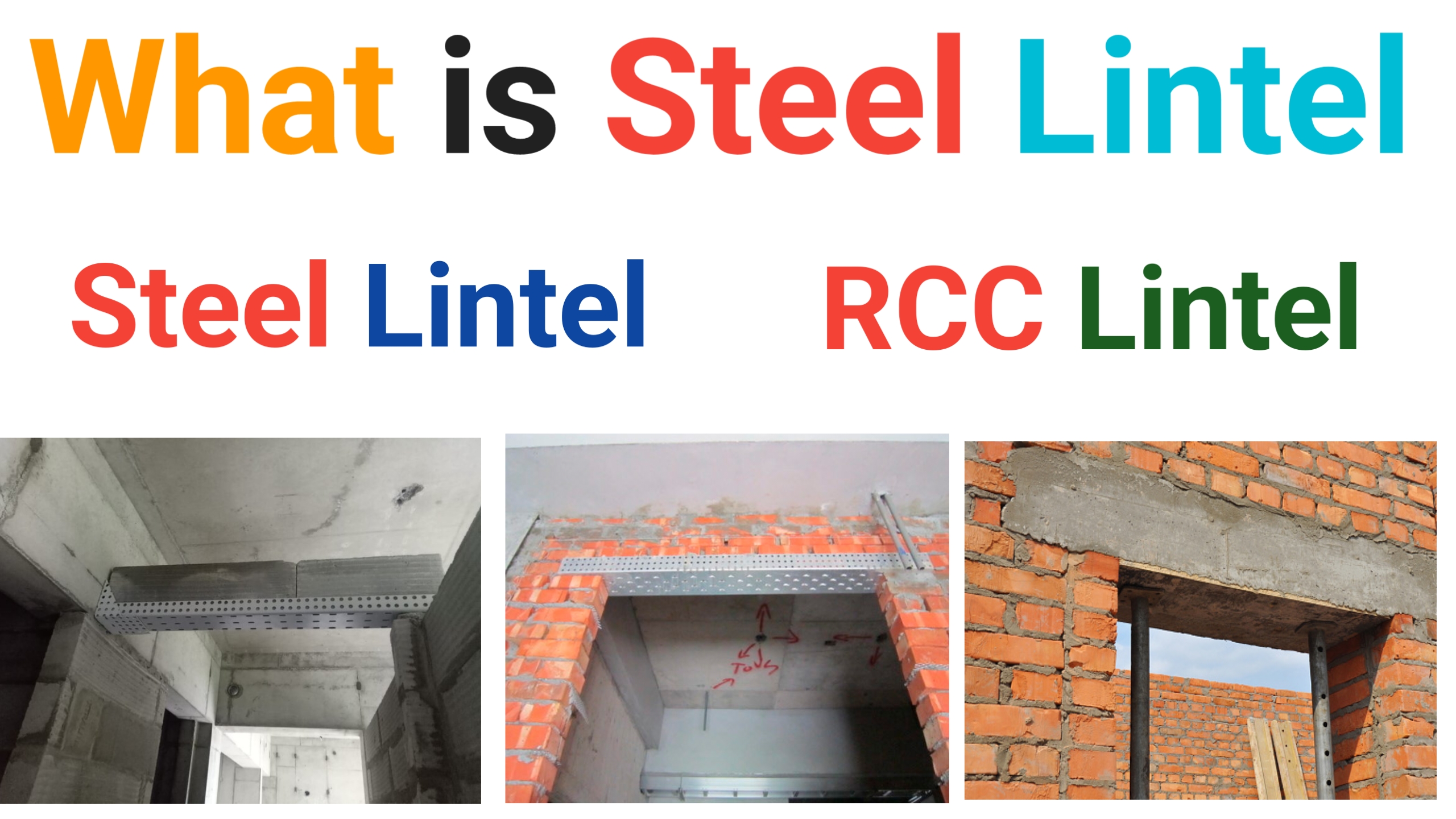In this article, we have described about Steel Lintel getting better knowledge about it.you will be read this post carefully.
A steel lintel is a structural element used in construction to support the weight of the building material above openings like doors and windows. It acts as a beam, transferring the load from the masonry or structure above to the sides of the opening, ensuring stability and preventing collapse.

Features of Steel Lintels
1. Material: Made from steel, these lintels are known for their high strength and durability.
2. Shape: They can come in various shapes and sizes, often as flat bars, angles, or channels, tailored to fit specific structural needs.
3. Usage: Commonly used in both residential and commercial buildings, especially where heavy loads are expected or where fire resistance is crucial.
Functions of Steel Lintels

Load Bearing: They support the weight of the wall above an opening and distribute it to the adjacent masonry.
Structural Support: Ensures the integrity and stability of the wall, preventing sagging or collapse.
Architectural Flexibility: Allows for the creation of large openings in walls without compromising structural integrity.
Applications of Steel Lintel
Steel lintels are widely used in various construction projects, including:
Residential Buildings: Above doors, windows, and garages.
Commercial Structures: In large openings like storefronts and industrial doors.
Renovations: Replacing or reinforcing older lintels to meet modern standards.
Advantages of Steel Lintel
1. Strength and Durability: Steel lintels are incredibly strong and can support heavy loads without bending or warping, making them suitable for various construction projects.
2. Fire Resistance: Steel is non-combustible and can withstand high temperatures, providing added safety in case of fire.
3. Long Lifespan: Steel lintels are resistant to pests and rot, ensuring a long service life with minimal maintenance.
4. Versatility: They can be manufactured in different shapes and sizes to fit various architectural designs and specifications.
5. Installation Ease: Steel lintels are prefabricated and relatively easy to install, reducing construction time.
6. Cost-Effectiveness: While the initial cost may be higher, their durability and low maintenance costs make them economical in the long run.
Disadvantages of Steel Lintel
1. Corrosion: Steel lintels are susceptible to rust if not properly treated or if exposed to moisture over time. This requires protective coatings and regular maintenance.
2. Thermal Conductivity: Steel has high thermal conductivity, which can lead to heat loss or gain in buildings, affecting energy efficiency.
3. Weight: Steel lintels are heavy, requiring proper handling and support during installation to ensure safety.
4. Cost: The initial cost of steel lintels can be higher compared to other materials like wood or concrete.
5. Expansion and Contraction: Steel expands and contracts with temperature changes, which can cause issues in the surrounding masonry if not properly accounted for during installation.
6. Environmental Impact: The production of steel involves significant energy consumption and emissions, raising concerns about its environmental footprint.
RCC Lintel

Difference between Steel Lintel and RCC Lintel
| Feature | Steel Lintel | RCC Lintel |
| Material | Made of steel, often in shapes like angles, I-beams, or channels. | Made of reinforced concrete, which includes steel bars embedded in concrete. |
| Strength | High strength and load-bearing capacity. | Strong, but typically less load-bearing capacity compared to steel. |
| Durability | Highly durable, but susceptible to corrosion without proper treatment. | Very durable with good resistance to weathering and corrosion. |
| Fire Resistance | Good fire resistance. | Excellent fire resistance due to concrete’s non-combustible nature. |
| Installation | Easier and faster to install due to prefabrication. | Requires more time and labor for casting and curing in place. |
| Maintenance | Requires periodic maintenance to prevent rust. | Low maintenance once properly installed and cured. |
| Cost | Generally more expensive initially. | Typically more cost-effective, especially for smaller spans. |
| Thermal Properties | High thermal conductivity, can lead to heat loss/gain. | Better thermal insulation properties due to concrete. |
| Weight | Lighter in comparison. | Heavier, adding more load to the structure. |
| Environmental Impact | Higher due to energy-intensive steel production. | Lower, but still significant due to cement production. |
| Flexibility in Design | Highly versatile and can be customized easily. |
Less flexible, more suitable for standard dimensions and shapes.
|
Also read- Difference between plinth Level, Sill Level and Lintel Level


I really enjoyed reading your article on steel lintels and how they provide essential support in construction. It’s clear how important it is to choose the right material to ensure stability and longevity in a building’s structure. I was particularly intrigued by the comparison between steel and other materials like concrete and wood for lintels, and how steel offers advantages in terms of strength and durability.
As someone involved in construction, I’m curious about how steel lintels interact with different exterior finishes, such as stucco. For example, when stucco is applied over steel lintels, are there any special considerations for preventing rust or maintaining the integrity of the stucco finish? I’d love to hear your thoughts on how these materials work together in the long term.